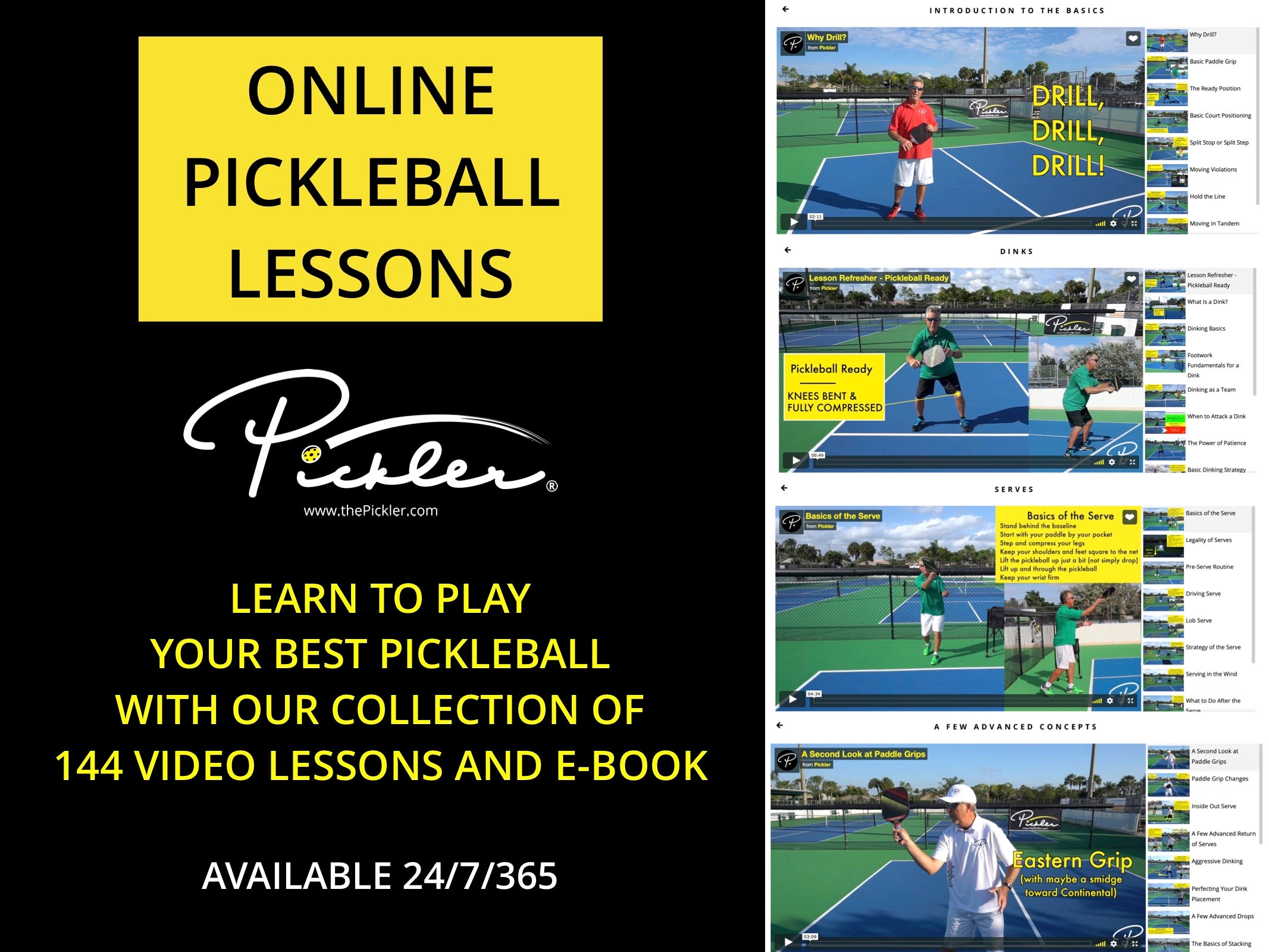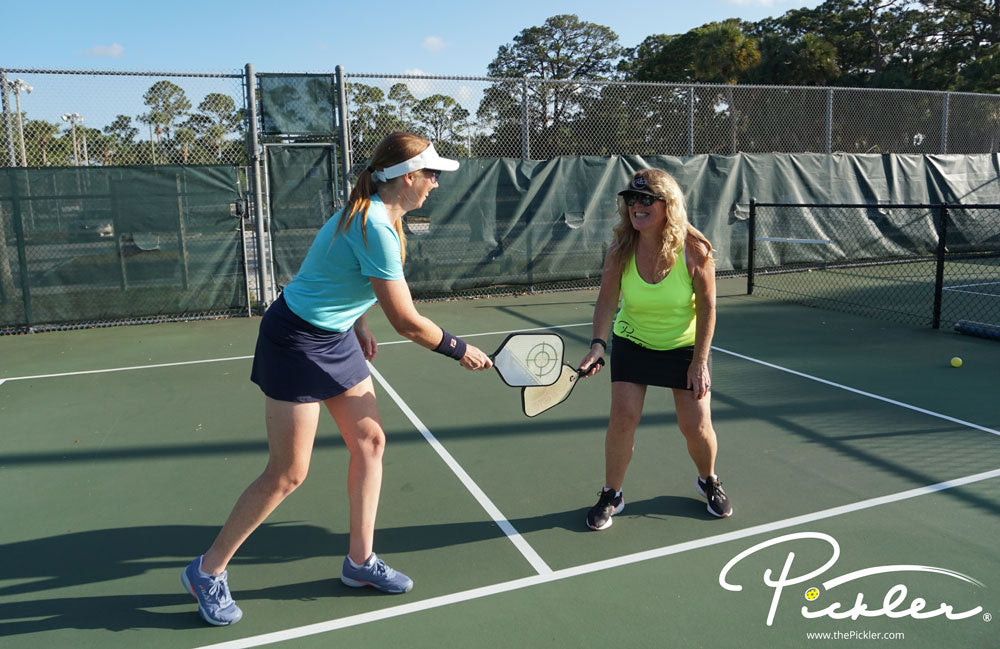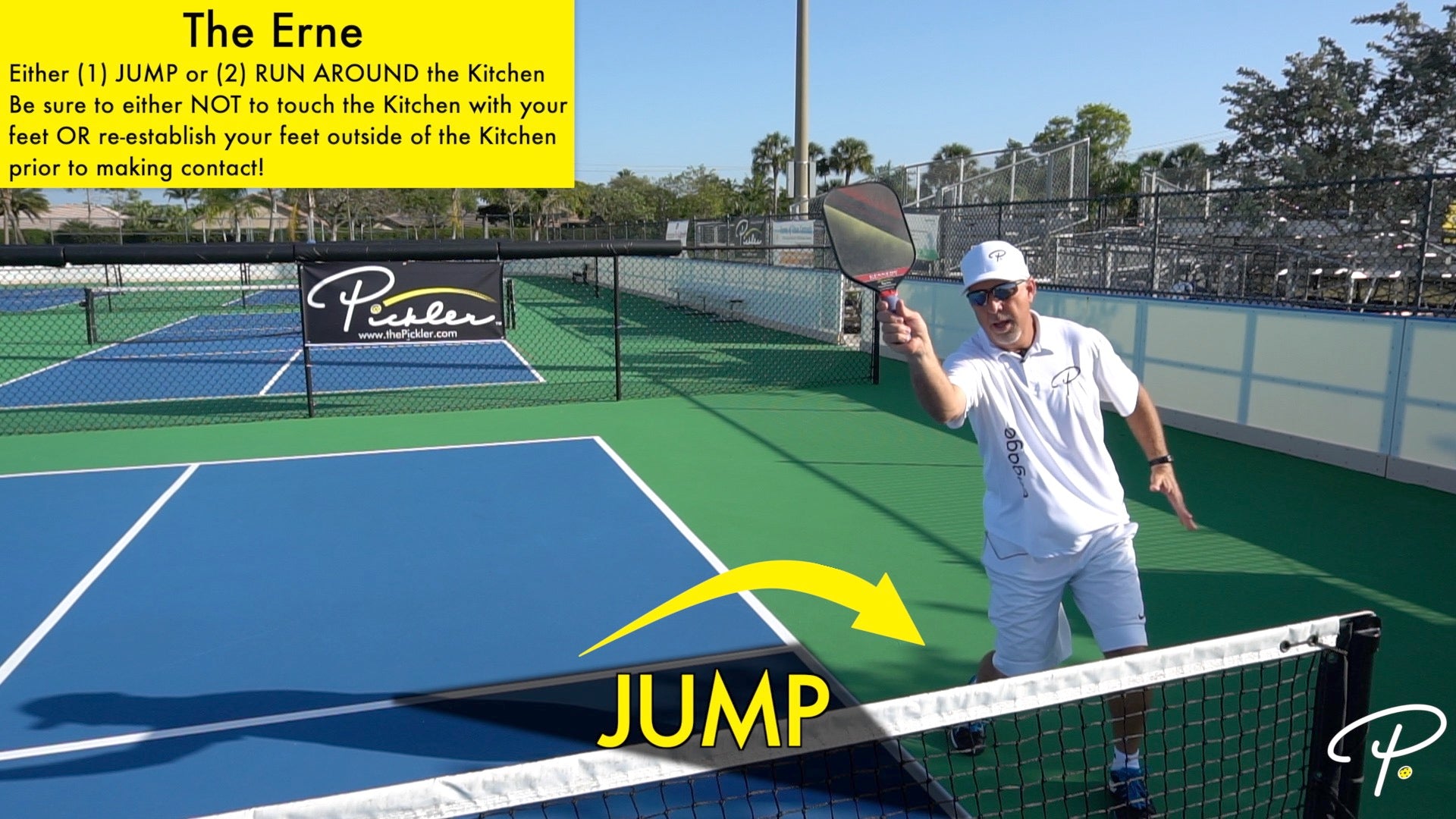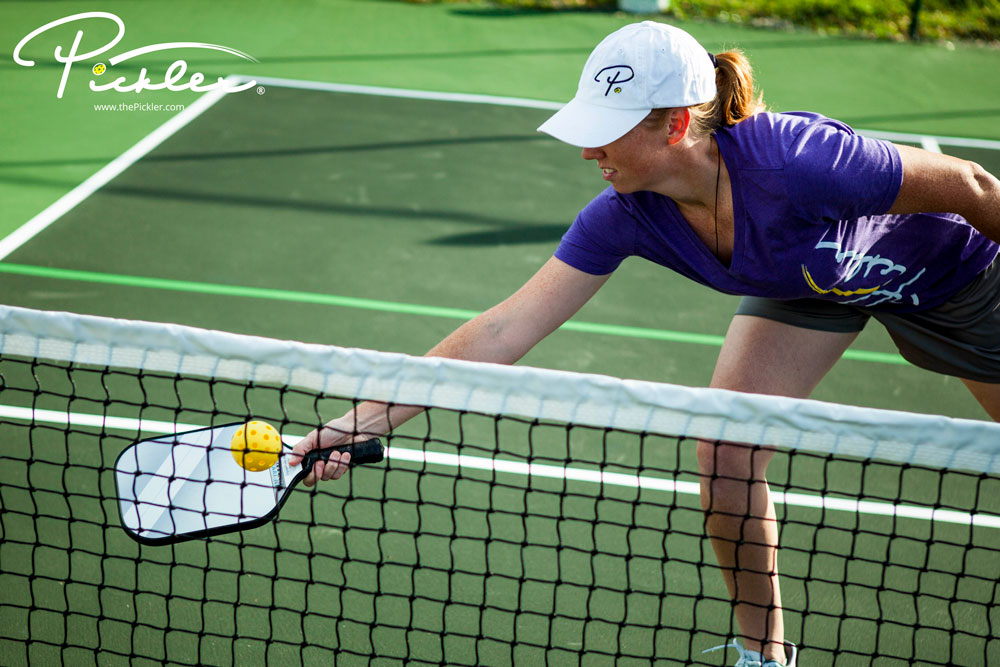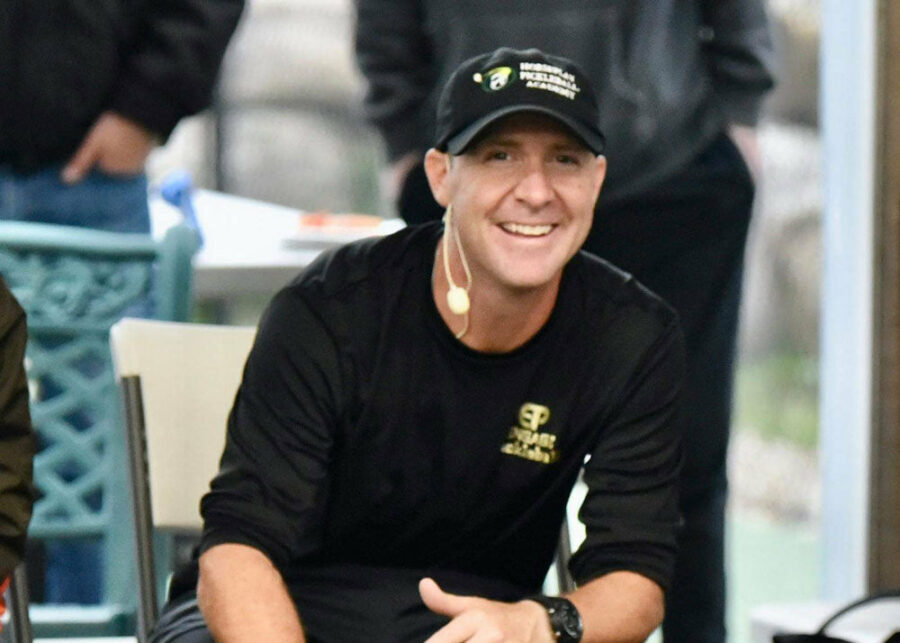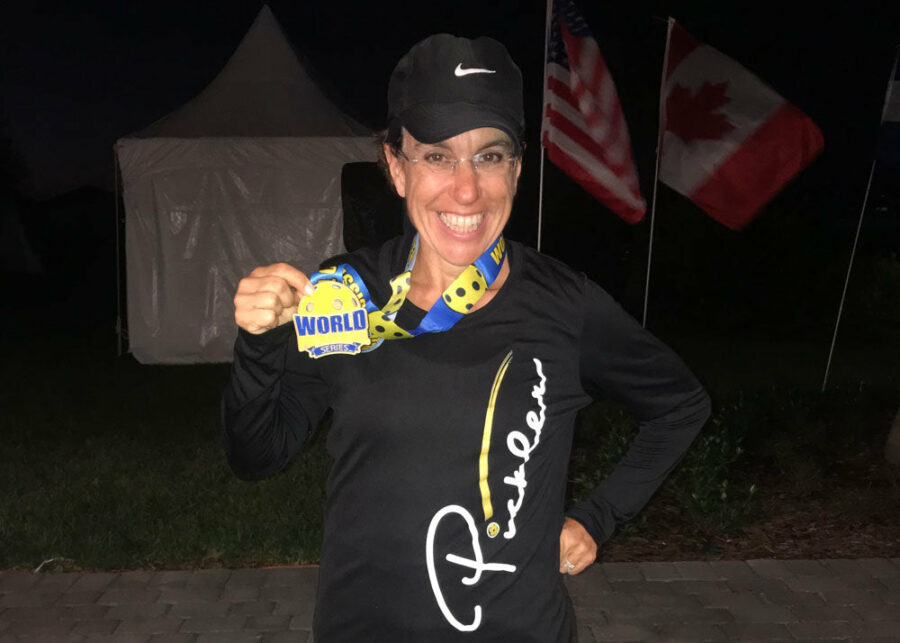Dinking generally happens when all four players in doubles pickleball are at the Non-Volley Zone line. Assuming you have mastered the steps to hitting the perfect pickleball dink, how do you make the most out of your dink shot? You and your partner worked so hard to get to the Kitchen line (as most points are won there!), but now how do you win the point?
Strategy is so important in the game of pickleball, as pickleball is not only a physical game, but also a mental game. This is particularly true when you are engaged in a dink battle with your opponents in doubles pickleball. What pickleball strategies should you use to win those dink battles with your opponents? This pickleball blog will break down 7 pickleball strategies and pickleball tips to help you win the dink battles on the pickleball court!
Pickleball Dinking Strategies
1. Take the Pickleball Out of the Air When You Can
When possible, try to hit the pickleball out of the air when you are dinking at the Kitchen line. This will help you apply pressure on your opponents, as it will cut down on their time to react to your shots and give your opponents less space to place their shots. Plus, by taking the pickleball out of the air, you will be able to cut down on any angles hit by your opponents or weird bounces from any spin put on the pickleball by your opponents. Further, by taking the pickleball out of the air, you will prevent the pickleball from getting to your feet, which are more difficult shots to react to and hit an unattackable shot off of.
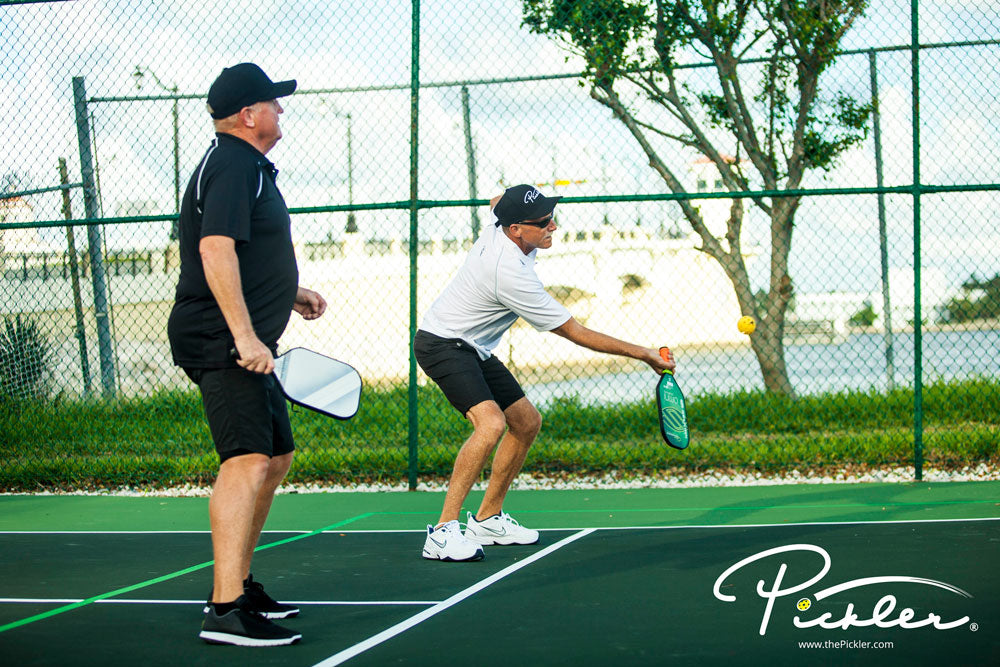
With that said, do not take the pickleball out of the air at all costs. If you overextend yourself by trying to take shots out of the air, your mechanics will breakdown, which will result in unforced errors and less aggressive dinks by you.
If you are unable to take the pickleball out of the air, you have two options:
-
Take a Step Back – Consider taking a step back to hit a better shot when the pickleball is at its highest point off the bounce; or
-
Hold the Line – If you can hold the line (more on this in the next strategy!), consider taking the shot off of the short hop, or immediately off of the bounce. By taking the shot relatively quickly after the bounce, you can still accomplish the goal of reducing your opponents’ time to react to your shot. Or, if the pickleball is a relatively weak dink from your opponents, you could also wait until the dink is at its highest point off of the bounce, and then hit a more aggressive shot when the pickleball is at its highest point.
2. If You Need to, It’s Okay to Step Back
As alluded to above in pickleball strategy #1, try to keep your feet at the Non-Volley Zone line. If you step back, you will expose your feet (giving your opponents an easy target to apply pressure), give your opponents more court space to place dinks and more angles to hit better dinks, and make your dinks more difficult because you will be farther from the pickleball net. Plus, you will give your opponents more time to react to a shot, which is the opposite of what you want. So, try to keep your feet at the Kitchen line.
With that said, if your opponents hit a quality shot at your feet, or maybe even a fastball that you need more time to react to, do not hesitate to take a small drop step back off of the Non-Volley Zone line. This will give yourself more time to react to your opponents’ shot. Plus, you may be able to hit a more aggressive shot off of a dink that bounces, especially one that bounces relatively high.
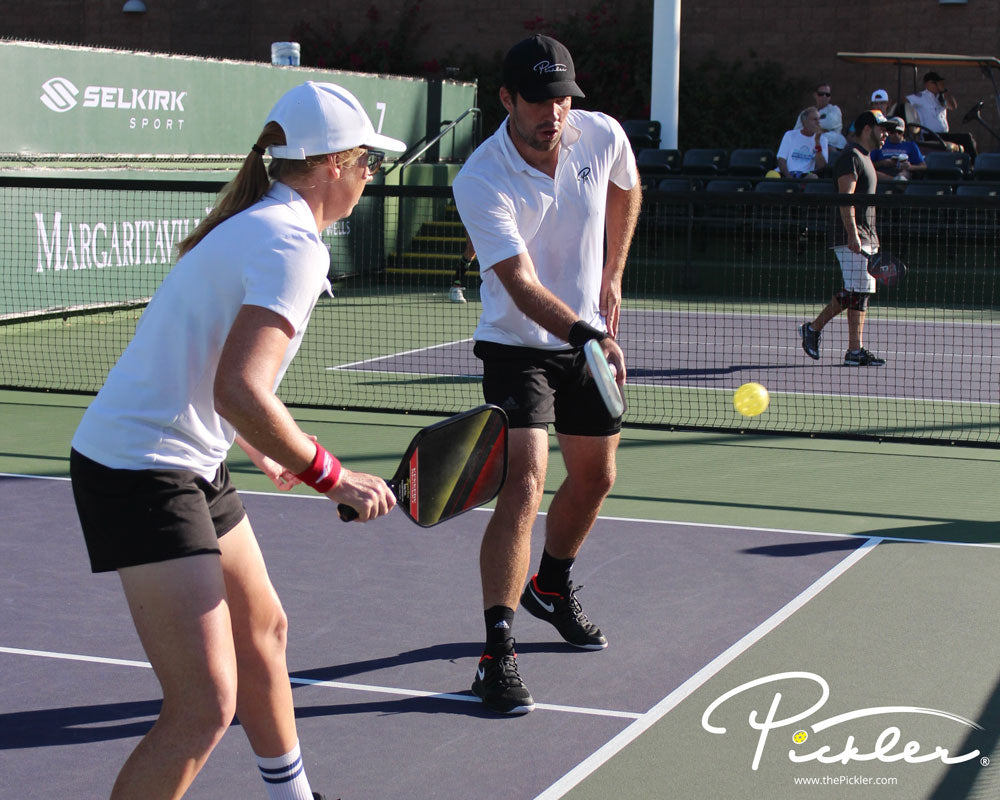
If you do step back, though, be sure to immediately step back in to the Non-Volley Zone line after you hit your shot. It is important that you step back up and hold the line.
3. Be Aggressive and Apply Pressure When Possible
There are several types of dinks when you are at the Kitchen line. You have non-purposeful dinks, which are simple dinks to get the pickleball back over the net. You also have purposeful dinks, where you are trying to be more aggressive and put pressure on your opponents. These aggressive dinks can be in the form of dinks with spin, extra pace, or strong angles, or dinks with strong placement.
Your shot selection and placement will be determined by the shot that your opponents hit to you. For instance, if your opponents hit a non-purposeful dink, then you may be able to hit a more aggressive, more purposeful dink back to them. If your opponents hit an aggressive dink to you and your partner that puts you in a compromising position, then you may need to hit a more passive dink back to your opponents.

When you have the chance, try to be aggressive and apply pressure with your dinks. As noted above, you can do this by adding spin, whether it be slice or backspin, top spin, or even side spin. The slice or backspin dink will have backspin on the pickleball, which tends to cause the pickleball to skid or skip upon contact with the pickleball court. On the other hand, the top spin dink will have spin toward your opponents, which will cause the pickleball to generate some pace and take a bigger bounce off of the pickleball court. Also, side spin will cause the pickleball to travel in the direction of the spin, and may cause funky bounces off of the pickleball court. Other ways to apply pressure is to hit your dink with additional speed or pace, which is easiest when hitting a dink with top spin, or by hitting your dink to have a strong angle to take your opponents off of the court, or some other aggressive placement, like hitting your dink down at your opponents’ feet.
4. Don’t Go for Too Much When Your Opponents Hit an Aggressive Dink
A dink can be offensive or defensive, purposeful or non-purposeful. If your opponents hit an aggressive dink to you and your partner that puts you in a compromising position (whether due to spin, speed, angle, and/or placement), then you may need to hit a more passive or defensive dink back to your opponents in order to try to relieve pressure. With that said, the goal of your passive or defensive dink is to still hit a shot that is unattackable by your opponents. In other words, keep your dinks low, so that your opponents have to hit up on the pickleball to get the pickleball back to your side of the pickleball net.
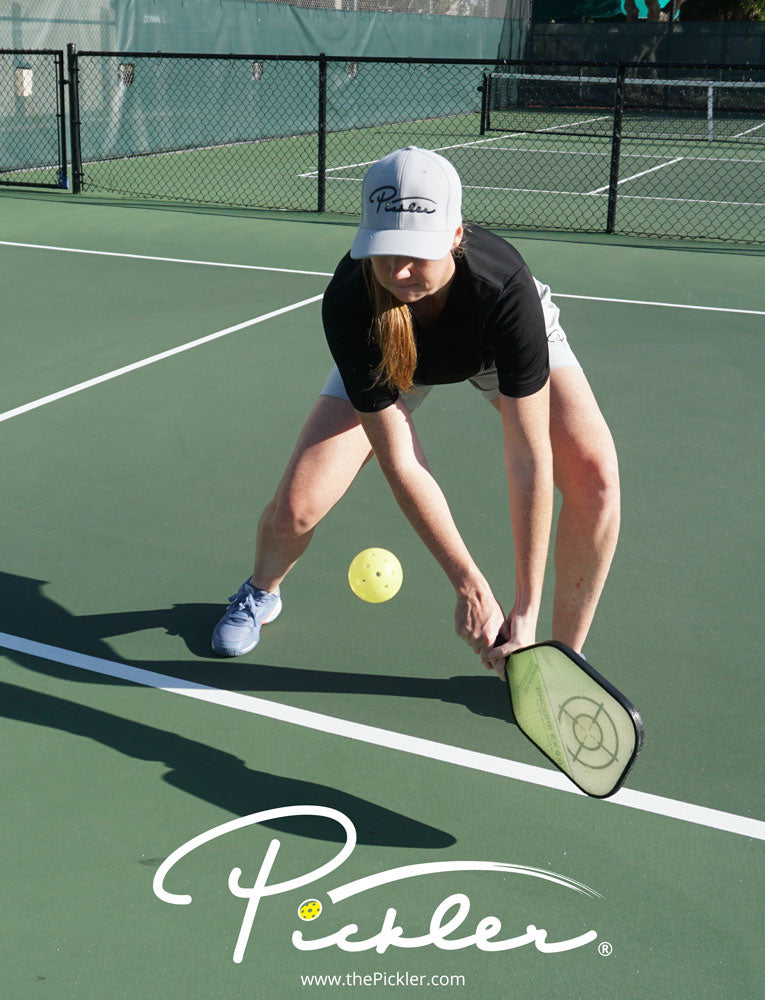
When hitting a defensive dink under pressure, do not go for too much. Rather, focus on hitting an unattackable dink that (a) lands relatively close to the pickleball net on your opponents’ side of the pickleball court; and (b) has a low bounce off of the pickleball court. These short, low dinks will require your opponents to let the pickleball bounce (rather than be able to volley the pickleball out of the air), and will be more difficult for your opponents to hit another offensive shot off of.
5. Move the Dink Around and Mix It Up
When dinking, it is critical to move the dink around, mix it up, and remain unpredictable. This means mixing up spins, speeds, angles, depths, and placement of your dinks. The more unpredictable you can be, the more you will catch your opponents off guard and confused on their side of the pickleball court (whether confused between the two, as to who should hit the pickleball, or confused themselves about how to hit the pickleball or whether to hit the pickleball out of the air or off the bounce).
With that said, there are a few common places to hit your dink:
- Crosscourt Dinks – A dink is most commonly hit crosscourt (as opposed to straightforward or in the middle of the court). This is because the crosscourt dink gives you the most margin for error, as (1) the lowest part of the net is in the middle; (2) you are hitting into a natural angle; and (3) you have more court space to dink into in your opponents’ side of the Non-Volley Zone. In other words, the crosscourt dink is more forgiving and you do not need to be quite as perfect.
- Down the Line Dinks – Despite the benefits of a crosscourt dink, you probably should not hit a crosscourt dink on every dinking shot. This is especially true because continuously going crosscourt may put extra pressure on you to be better and better on every successive shot. Plus, you want to remain unpredictable! Consider going down the middle of the pickleball court, or down the line on your side of the pickleball court, in order to keep your opponents moving and prevent your opponents from cheating to one side of the pickleball court. Down the line dinks are also generally easier shots to hit successfully than crosscourt dinks if you find yourself under pressure. In light of this, consider using down the middle and down the line dinks to stay in points if you are struggling to return strong or well-placed shots by your opponents with crosscourt dinks. This is especially true if your opponents are hitting strong, aggressively angled crosscourt dinks that pull you off the pickleball court and out of position. Rather than hit a shot at a sharp angle back across the pickleball court, you may find it is easier to gently tap the pickleball over the net in front of you. Lastly, consider going down the line on your side of the pickleball court when you see open court space from your opponents over-shifting. However, pick your opportunities carefully, as your opponent may be anticipating and waiting for your down the line shot (for instance, advanced pickleball players may go for an Erne shot on you!).
- Middle Dinks – Middle dinks are great options to cause confusion between your opponents, or even cause your opponents to fight over the pickleball. This is especially true when you are playing opponents that are relatively new to playing with each other. Middle dinks are also effective in trying to open up the pickleball court. For instance, say you take a dink to the middle of your opponents in doubles pickleball. Both of your opponents take a step toward the middle. When your opponents return the pickleball to you, since they both took a step toward the middle, you now have more room to hit the pickleball toward the sidelines. Then, your opponents will move toward the sideline to return the pickleball. Now, you have even more room in the middle of your opponents because one moved toward the sideline. See a pattern? Use the middle dink to help you open up other parts of the court. Lastly, middle dinks are effective in avoiding an Erne from your opponents if they are relatively advanced pickleball players.
- Dinks at Your Opponents’ Feet – Dinks to your opponents’ feet, whether crosscourt, down the line, or down the middle, are great ways to apply pressure because it is difficult for your opponents to aggressively hit a pickleball at or near their feet. This is because your opponents will be unable to hit the pickleball out in front of their bodies.
- Dinks to Backhands – Most pickleball players have weaker backhand shots than forehand shots. So, dinks to pickleball players’ backhands is a common and effective dinking strategy on the pickleball court.
Again, above all, mix it up and remain unpredictable!
6. Exercise Patience
Dink battles require patience in order to be successful. As the dink battle goes on, the pressure will mount, and it is easy to want to relieve that pressure by going for a winner or otherwise speeding up the point and getting out of the dink battle. However, if you speed up a shot that is unattackable, you will likely lose the rally by hitting the pickleball into the net, hitting the pickleball out of bounds, or hitting the pickleball at your opponents for an easy counterattack. Only attack shots that are attackable. Avoid the urge to attack an unattackable shot from your opponents. Rather, be patient and continue to build the point by hitting quality shots that put pressure on your opponents to hit a less than ideal shot.
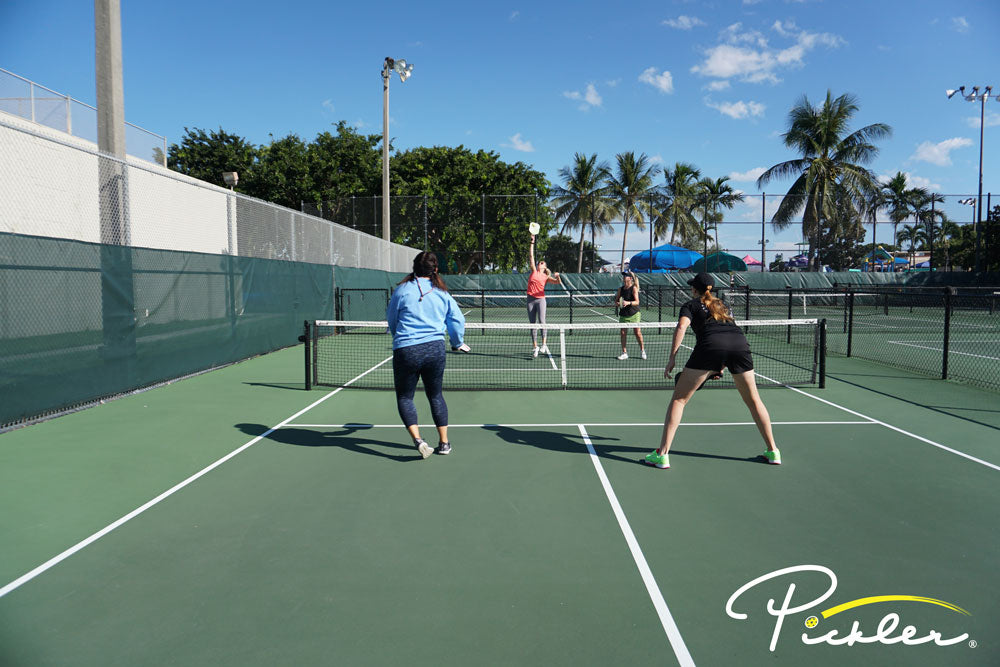
7. Work with Your Partner as a Team
When playing doubles in pickleball, you must work with your partner as a team. If you do not work with your partner as a team, then you will not win. To work as a team, there are two critical things that you and your partner will need to do:
- Stay in Tandem – When you and your partner are dinking at the Kitchen line, you and your partner will follow the pickleball in tandem. Generally, you and your partner will always be about six to eight feet apart at the Kitchen line. Think about it as if there were a six- to eight-foot string attaching you to your partner. If you move, your partner should move. If your partner moves, then you should move.
- Communicate – If your opponents’ hit the pickleball down the middle of your side of the court, both you and your partner could go after the pickleball. However, you and your partner will have the potential of crashing into each other and smashing paddles. In light of this, communication is essential to winning doubles pickleball. Communicate with your partner on the pickleball court—“Mine.” “Me.” “You.” “I got it.” “Yours.” Also, since forehand shots are generally stronger and more consistent than backhand shots, the rule of thumb is for the player with the forehand down the middle to take the shots that are down the middle.
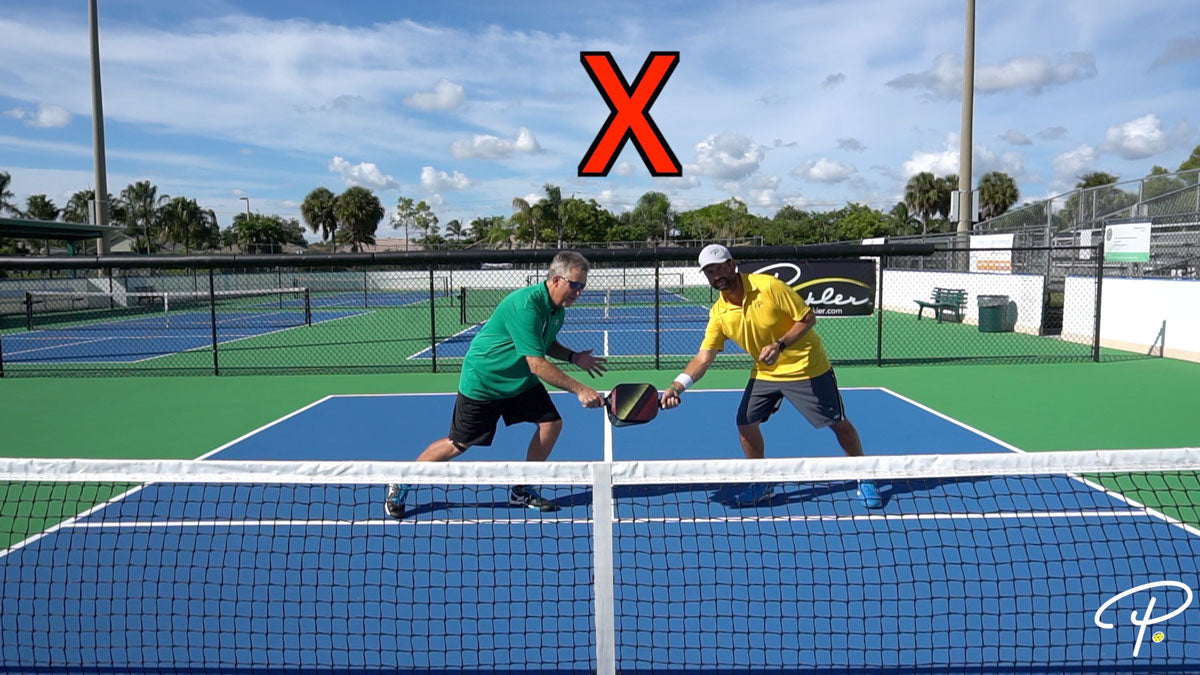
Make the most of your dinking, and win more dink battles, with these pickleball dinking strategies!
WANT MORE PICKLEBALL TIPS AND STRATEGIES?
For more on the fundamentals to hit a dink, check out Pickler’s pickleball blog, “11 Steps to Hitting the Perfect Pickleball Dink.”
Plus, if you want more pickleball tips and strategies on every aspect of your pickleball game, check out Pickler’s online video lesson collection called My Pro Pickleball Coach. My Pro Pickleball Coach is a fraction of the price of one clinic or even one lesson, and features over 140 video lessons (over 7 hours of instruction!), as well as a corresponding e-book. These online video lessons are available on demand 24/7 and breakdown every aspect of the sport of pickleball, including pickleball drills, strategy, and advanced concepts, so you will play your best pickleball.
